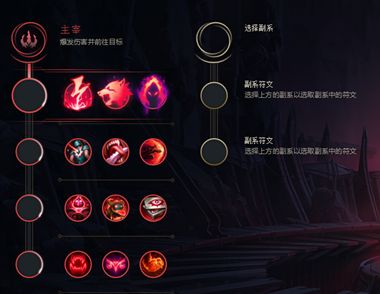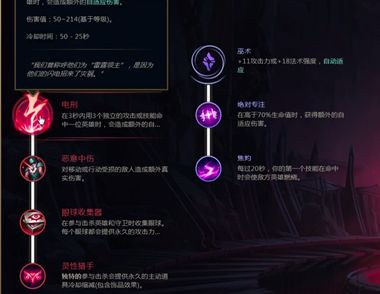Struts源码研究-logic-Iterator标签篇
清醒时做事,糊涂时读书,大怒时睡觉,无聊时关注图老师为大家准备的精彩内容。下面为大家推荐Struts源码研究-logic-Iterator标签篇,无聊中的都看过来。
Struts里的Html:Cancel标签是在Form中经常运用的一个标签,主要功能就是cancel当前Form,一般写法如下:
===========================
html:cancel>
bean:message key="createuser.cancelbutton"/>
/html:cancel>
===========================
这个标签将生成如下的HTML代码:
input type="submit" name="org.apache.struts.taglib.html.CANCEL" value="返回" onclick="bCancel=true;">
bCancel=true是一段javascript,bCancel是在使用Struts的Validator时,Struts自动为我们加的一段Javascript代码里的一个变量
这段Javascript简略摘要如下:
===========================
script type="text/javascript" language="Javascript1.1">
!-- Begin
var bCancel = false;
function validateCreateUserForm(form) {
if (bCancel)
return true;
else
return validateMaxLength(form) && validateRequired(form) && validateMinLength(form);
}
===========================
由上可以看到,这个bCancel=true时,Javascript将自动将表单提交(return true),也就是说,假如我们在后台Action的代码里没有对这个Cancel动作写特定代码的话,这个Cancel标签产生的效果和submit按钮产生的动作完全一致!!(因为这个按钮的type也等于submit)这一点需要非常的注重!所以,一般来说,我们在Action类的execute方法里面会加上如下的一段代码来处理这个Cancel动作:
===========================
// Was this transaction cancelled?
if (isCancelled(request)) {
return (mapping.findForward("createusersUCcess"));
}
===========================
有了以上的代码,Cancel动作就有了相应的处理代码,转到相关的页面了。本来事情已经解决,但本着对Struts源码研究的精神,我们还需要对以上代码研究一下
OK,让我们来看一下isCancelled这个方法在什么地方被定义了,内容是什么?
首先发现,这个方法被定义在Action类里面,代码如下:
===========================
/**
* p>Returns code>true/code> if the current form's cancel button was
* pressed. This method will check if the code>Globals.CANCEL_KEY/code>
* request attribute has been set, which normally occurs if the cancel
* button generated by strong>CancelTag/strong> was pressed by the user
* in the current request. If code>true/code>, validation performed
* by an strong>ActionForm/strong>'s code>validate()/code> method
* will have been skipped by the controller servlet./p>
*
* @param request The servlet request we are processing
* @see org.apache.struts.taglib.html.CancelTag
*/
protected boolean isCancelled(HttpServletRequest request) {
return (request.getAttribute(Globals.CANCEL_KEY) != null);
}
===========================
原来是在request对象中查找Globals.CANCEL_KEY这个key值是否绑定了一个对象,假如是,那么就代表按下Cancel按钮后,
Struts会在request对象中绑定一个对象,并以这个key值来命名那Struts是在什么地方绑定了这个对象呢?很自然的,让我们从头找起从ActionServlet的process方法开始找起,历经多次方法调用,终于找到了根源,原来是在RequestProcessor.java中,代码如下:
===========================
/**
* p>Process an code>HttpServletRequest/code> and create the
* corresponding code>HttpServletResponse/code>./p>
*
* @param request The servlet request we are processing
* @param response The servlet response we are creating
*
* @exception IOException if an input/output error occurs
* @exception ServletException if a processing exception occurs
*/
public void process(HttpServletRequest request,
HttpServletResponse response)
throws IOException, ServletException {
//省略代码若干
// Process any ActionForm bean related to this request
ActionForm form = processActionForm(request, response, mapping);
//答案就在这个processPopulate方法中
processPopulate(request, response, form, mapping);
if (!processValidate(request, response, form, mapping)) {
return;
}
/**
* Populate the properties of the specified ActionForm instance from
* the request parameters included with this request. In addition,
* request attribute code>Globals.CANCEL_KEY/code> will be set if
* the request was submitted with a button created by
* code>CancelTag/code>.
*
* @param request The servlet request we are processing
* @param response The servlet response we are creating
* @param form The ActionForm instance we are populating
* @param mapping The ActionMapping we are using
*
* @exception ServletException if thrown by RequestUtils.populate()
*/
protected void processPopulate(HttpServletRequest request,
HttpServletResponse response,
ActionForm form,
ActionMapping mapping)
throws ServletException {
if (form == null) {
return;
}
// Populate the bean properties of this ActionForm instance
if (log.isDebugEnabled()) {
log.debug(" Populating bean properties from this request");
}
form.setServlet(this.servlet);
form.reset(mapping, request);
if (mapping.getMultipartClass() != null) {
request.setAttribute(Globals.MULTIPART_KEY,
mapping.getMultipartClass());
}
RequestUtils.populate(form, mapping.getPrefix(), mapping.getSuffix(),
request);
// Set the cancellation request attribute if appropriate
if ((request.getParameter(Constants.CANCEL_PROPERTY) != null)
(request.getParameter(Constants.CANCEL_PROPERTY_X) != null)) {
request.setAttribute(Globals.CANCEL_KEY, Boolean.TRUE);
}
}
===========================
OK,看最后几行代码,Struts从request中取得Constants.CANCEL_PROPERTY这个参数,假如这个参数不为空,那么他就将TRUE这个对象以Globals.CANCEL_KEY为key值,放到了request对象中至于这个Constants.CANCEL_PROPERTY这个值是什么,现在都可以猜到了,显然就是html:Cancel这个标签生成的HTML代码中,Cancel这个按钮的名称嘛!查了一下,果然是:
input type="submit" name="org.apache.struts.taglib.html.CANCEL" value="返回" onclick="bCancel=true;">
而Constants.CANCEL_PROPERTY这个值就是org.apache.struts.taglib.html.CANCEL










